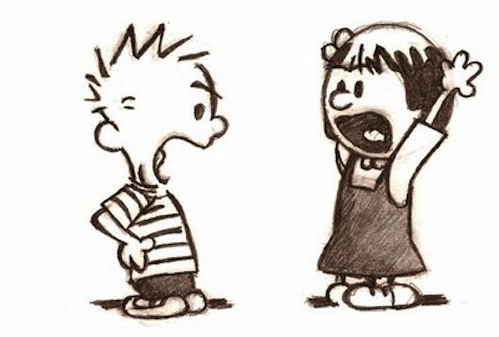Never underestimate the power of a worthy adversary

Fighting. Perhaps more than anything else, it’s what our current President is known for. He can pick a fight like nobody’s business. Most of his tweets are about fights: with his own party, with opposing parties, with members of Congress, heads of State.
And we can’t stop paying attention. Every time he tweets, every time he speaks, it’s news.
Why? Almost certainly not on purpose, he’s tapped into one of the core facts of neuroscience and storytelling: when you pick a fight, people pay attention.
Don’t take my word for it. Listen to the Paul Zak, writing in the Harvard Business Review:
“In order to motivate a desire to help others, a story must first sustain attention – a scarce resource in the brain – by developing tension during the narrative.”
We are bombarded with content every day, brands and causes and politicians and people desperate to get our attention. And because of all the noise, our brain has a spam filter that immediately discards up to 99% of what we hear.
But when we sense a conflict, our ears perk up, and our mirror neurons start firing. Some primal instinct, the filter, says “This matters. Pay attention to this one.”
When you think about it, it’s a survival instinct from way back. If we wanted to survive in the wild, we have to make sure that we see danger as it’s approaching. If we want to survive as a CEO, we have to make sure that we see danger as it’s approaching! So when our brains sense conflict, they hone in.
But look at your own narratives — your social media posts, your solicitation letters, your message platforms — and ask yourself. Is there a conflict here? Or is it just information?
Because if you don’t have a conflict, you don’t have a story. And no one will listen to you.
Pick the right fight to advance your cause
There’s a second part to this story. You can’t just start picking random fights and trust that it will work, unless your brand identity is something along the lines of “random petulance”. One could say that while the President’s tweets do a great job getting our attention, they don’t do much to advance his cause. And we want to advance your cause.
So let’s talk about two elements to a good fight: a worthy adversary, and something worth fighting for. These are deep subjects, so I’ll just touch on them briefly here.

The worthy adversary isn’t always external. It can also be internal: the shadow side of the self. You can help your audience fight their own fears, their own weaknesses.
Choose a worthy adversary
What is something that you want to see defeated, that your audience also wants to see defeated? When he became a superstar, Lance Armstrong’s adversary was not other cyclists, or even winning the Tour — those are fights interesting only to a small number of cycling fans. His adversary was cancer, and the idea of human weakness in general. It’s why he broke through as he did. He changed the adversary, and changed the game.
So think about your own adversary. What are you fighting against, that your audience also cares about? Is it internal, some kind of fear or weakness inside the self? Is it external? I had one client who was grappling with a world in which the same fight had been going on for so long, and the audience was just exhausted. Our adversary was “empathy exhaustion” — the idea that people were too tired to care. And once we realized that was the fight we were taking on, our whole narrative changed.
Something worth fighting for
The second thing you have to have is simple: something worth fighting for. There’s been fascinating research on fear and hope as motivators, and what scientists have found is that fear works to get us to not do something, but if you want people to take positive action, you have to give them something positive to fight for. So it’s not enough just to name an adversary, and pick a fight: you have to let people know what you’re fighting for. Give them some sort of hope for victory.
Pick a fight. Choose a worthy adversary. And let us know what you’re fighting for. If you work those elements into your narrative, whether it’s your Facebook feed or your fundraising email, you’re likely to get our attention.



